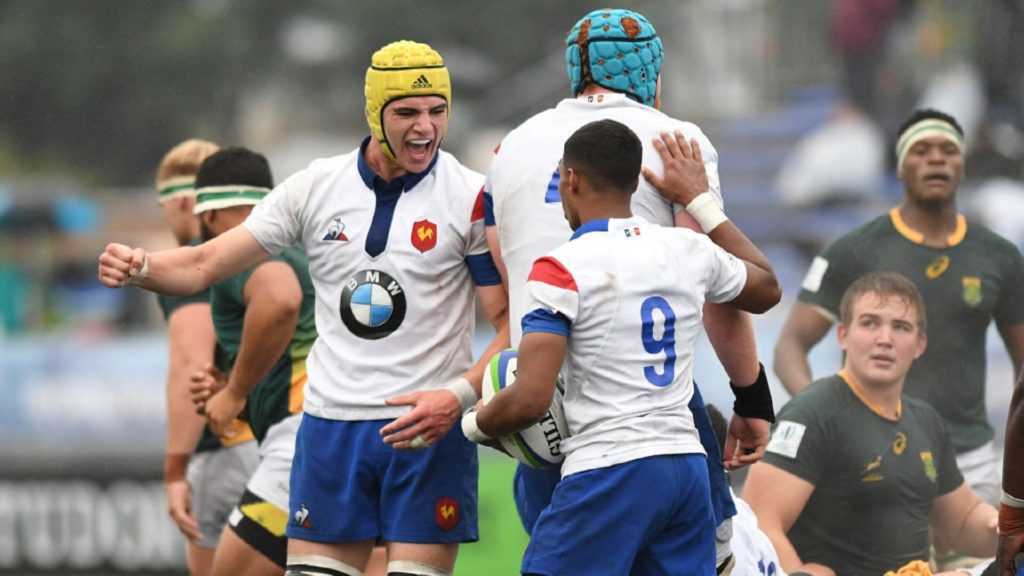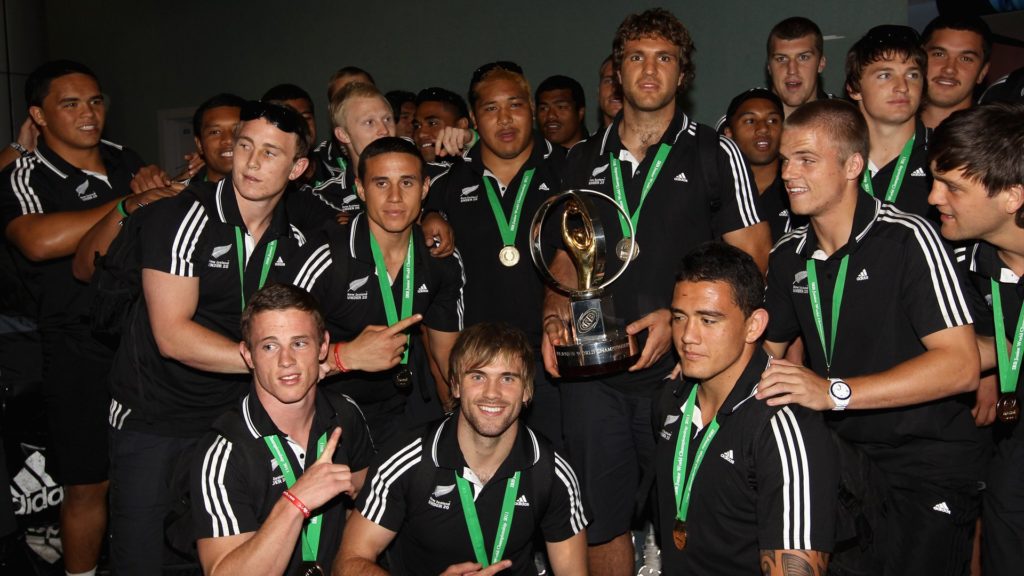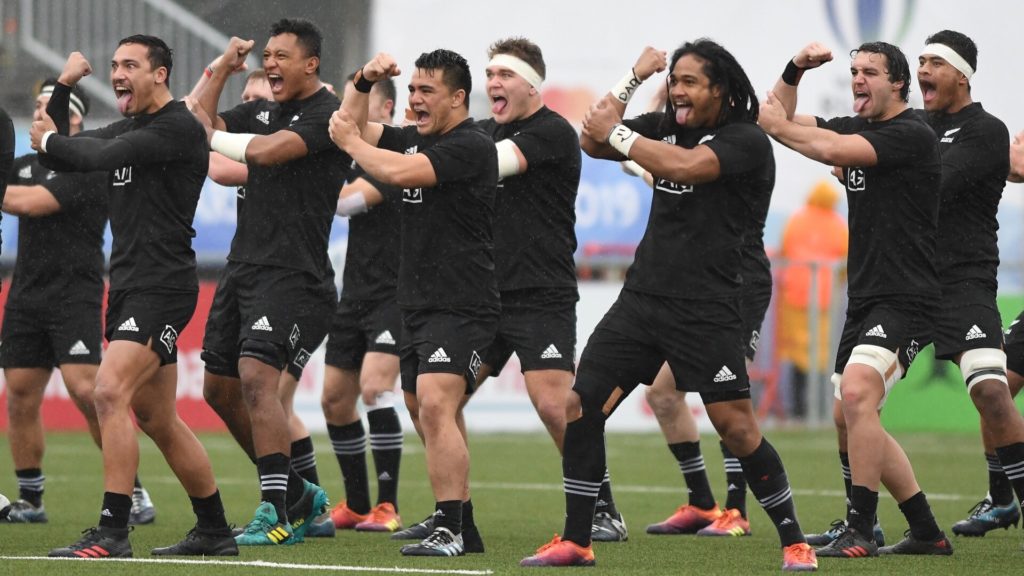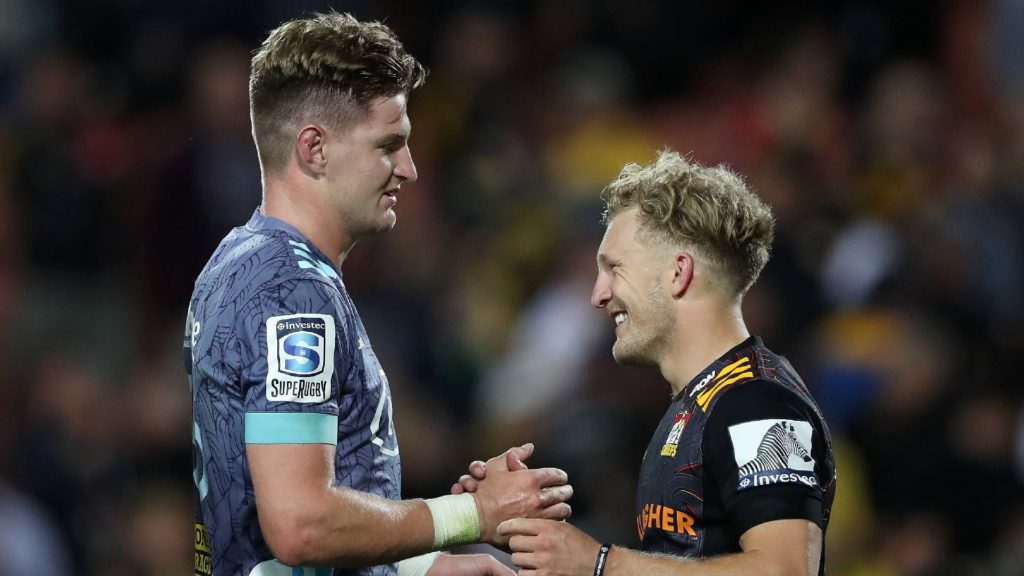In the first four years of World Rugby’s Under 20 Championship competition, from 2008 until 2011, New Zealand were unstoppable.
The team were undefeated in the 20 matches played over that four-year period, scoring 993 points in the process and conceding just 185. They let in less than a try per game.
Naturally, they were also crowned champions in all four campaigns with Chris Smith, Aaron Cruden, Tyler Bleyendaal and Luke Whitelock lifting the trophy.
The Baby Blacks haven’t found navigating the tournament such easy sailing since, however.
In the eight tournaments played from 2012 until 2019 – the past two have been called off due to the global pandemic – New Zealand have managed just two titles.
England, who NZ bested in the 2008, 2009 and 2011 grand finals, have earned three wins of their own while South Africa have come out trumps twice. The last two titles have fallen the way of France, an emerging superpower of age-grade rugby.

On the face of it, it’s a significant fall from grace for New Zealand. How exactly has a team who were unbeaten over the first four years of the competition managed fourth, fifth and seventh place finishes during the most recent four?
Of course, age-grade sport is a different kettle of fish to top-flight professional sports.
While the likes of your New Zealand and France national teams maintain roughly the same squad from one campaign to the next, the Baby Blacks and their counterparts from around the world effectively have to start anew every year.
Despite the team maintaining the same name and identity, there are really very few similarities between the New Zealand side that finished first in 2017 and the one that couldn’t even make the semi-finals a year prior.
Every time someone pulls on a black jersey, you want to win. You certainly don’t want to lose that expectation
Mike Anthony, NZR Head of High Performance
What does remain consistent, however, is the approach from New Zealand Rugby – who are the first to acknowledge that results over the better part of the last decade haven’t exactly been up to scratch.
Mike Anthony, NZR’s head of high performance since 2018, has been involved in the age-grade set up for the past 11 years and is acutely aware of the challenges facing the Baby Blacks.
“Every time someone pulls on a black jersey, you want to win,” Anthony tells The XV. “You certainly don’t want to lose that expectation.”
But, he says, winning isn’t everything.
While New Zealand were first out of the blocks in the early years of the Under 20 World Championship, other nations have only elevated its importance more recently and while NZR’s primary focus for the Under 20s is conversion into the professional ranks, other unions may have taken a different approach.
“Probably the biggest change is other teams getting their act together and taking it pretty seriously, in terms of their preparation for their programme,” says Anthony.

“If you look at the Northern Hemisphere, they’ve got the Six Nations Under 20s and they often get their players into their clubs straight out of school. I had five years in the UK at Gloucester and we had that. Whether it be France, England, Ireland, young players will go into a full-time programme and potentially play professional club rugby or at least train alongside those players.
“That’s probably our biggest challenge now; we’ve been up against, essentially, full-time athletes.”
Once players are at a point where they’re ready for Under 20s rugby, nations have very different approaches to squad selection.
England, for example, tend to name a 40 to 50-man training squad around December before quickly whittling that selection down to 32 men in time for the Under 20 Six Nations, which typically kicks off in February.
The World Championship then runs for three weeks in June, which marks the end of the Under 20s calendar for the year.
Whether it be France, England, Ireland, young players will go into a full-time programme and potentially play professional club rugby or at least train alongside those players
Mike Anthony
That’s a significant contrast to the New Zealand system.
Ahead of the 2019 season, over 100 players attended training camps across the country from November 2018 before the squad was trimmed down to 52 players four months later. All going to plan, the Baby Blacks would have narrowed down their team ahead of the Oceania Under 20s competition in late May – but the tournament was cancelled.
While the 32-man England Under 20s side were undergoing tough matches week after week from late January, New Zealand were still operating with over 100 players.
Instead of building combinations and getting players schooled up for the rigours of the next level of competitive rugby, New Zealand held onto a broad base of players, knowing that while cutting down the selection might help bring success at the World Championship, it wouldn’t do much good for helping a new crop of young players prepare for their futures in the professional game.

“There’s been a real development focus for us whereas if the programme was purely about winning a tournament, it would look quite different,” says Anthony.
“If you geared it up to win a tournament you would take the team touring, you would play Northern Hemisphere teams and get exposed to that physicality and set-piece mentality that we do in tournaments, but we keep the programme with a wide base early on.”
That’s why the programme’s success isn’t measured on immediate results but on how many wider training squad players progress on to representing NZ’s five Super Rugby franchises.
Originally, only the Championship team’s progression was used as the key metric but now, of the 100-plus players that are involved in the various training camps, over 50 per cent are expected to make the step up to Super Rugby.
“Initially, we had 33 per cent but it was of the tournament team go onto professional ranks,” explains Anthony.
If you geared it up to win a tournament you would take the team touring, you would play Northern Hemisphere teams and get exposed to that physicality and set-piece mentality that we do in tournaments, but we keep the programme with a wide base early on.
Mike Anthony
“I changed that six or seven years ago. The reason we did that is we felt that didn’t encompass the wider programme and some of the kids are in that programme right through until Oceania so almost up to the World Champs and they just miss selection but they still had the opportunity of a six-month programme and development and so on, so we have significant touch points throughout with that young group.
“So we decided to shift that to 50 [per cent] and make it about the wider programme so as long as they’ve had exposure to the programme for a period of time, then they were counted if they transitioned through. We’re hitting the targets, I think we’ve been at about the 60s, mid-60s for the last two or three years that programme’s been running.”
The other challenge that the Southern Hemisphere sides have faced relative to their northern rivals is the timing of the World Championship, which takes place in the final weeks of Super Rugby’s regular season.
At that stage of the competition, there’s an inevitable pile-up of injured bodies on the sidelines and the clubs are calling all arms to the deck to ensure momentum isn’t lost heading into the knockout rounds.
The Northern Hemisphere competitions, meanwhile, typically finish up at the end of May.
While the likes of England and France can usually call upon their full selection of Under 20s eligible players for the World Championship in June, that’s not always the case for the Baby Blacks, who often have to make do with some of their top stars unavailable, instead needed by their Super Rugby franchises.

The likes of All Blacks TJ Perenara, Sam Cane, Damian McKenzie, Jordie Barrett, Caleb Clarke all missed out on their final season of playing at the Under 20s World Championships for that very reason.
While transition rates to the next level are high, there’s still a desire for the Baby Blacks to improve their performances at the World Championships – especially given the recent poor run.
That’s led to some changes within the age-grade system, including the coming introduction of Super Rugby development contracts for burgeoning Under 20s stars, as well as the newly created Super Rugby Aotearoa Under 20s competition, which kicked off last weekend.
That three-game tournament has replaced the Jock Hobbs Memorial Under 19s competition, which was contested by provincial sides, and will help bring down costs while also strengthening the Under 20s game and preparing the next generation of players for the World Championship.
While the World Championships won’t take place again in 2021, there are expectations that next year will see the return of one of the more exciting tournaments on the rugby calendar – thanks, again, to the almost 100 per cent turnover every season.
With many of next year’s Baby Blacks likely to be playing in this week’s Aotearoa Under 20s competition, there’s hope that there’ll be greater chemistry in next year’s national side and that, perhaps, the former undisputed kings of the age-grade competition can again return to their place on the peak of the mountain.


Comments
Join free and tell us what you really think!
Sign up for free